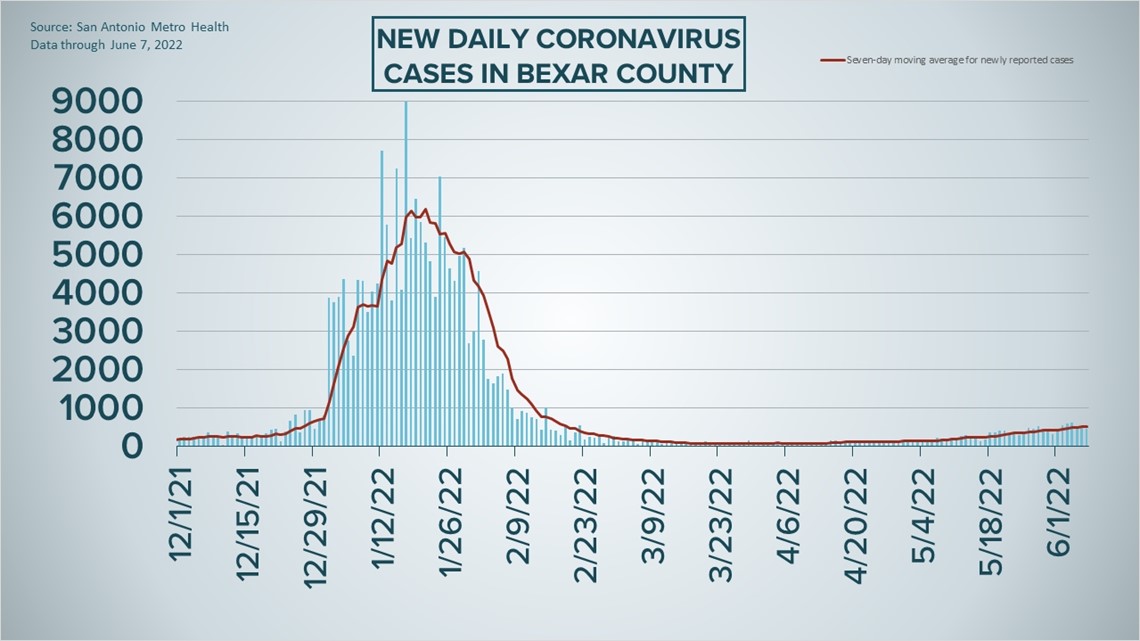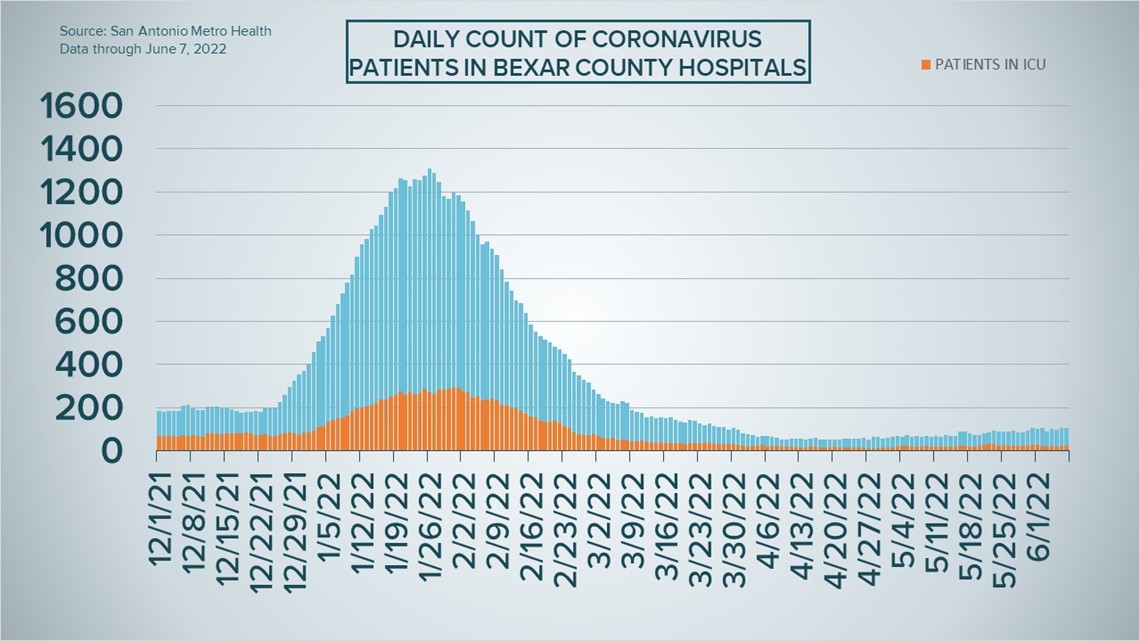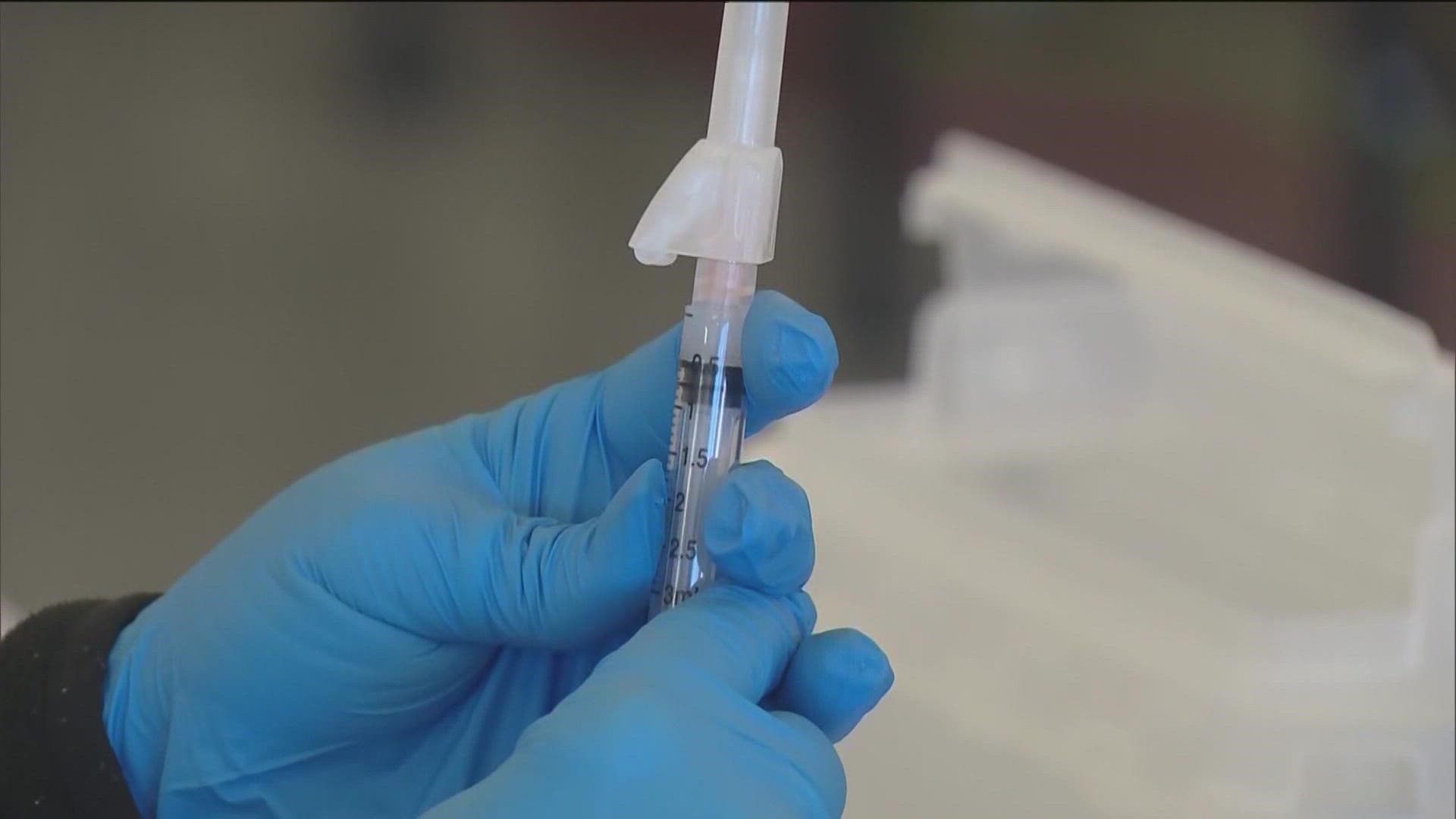SAN ANTONIO — Bexar County's seven-day new case average for COVID-19 has gone up every day for nearly two weeks and stands at 514 as the San Antonio area continues contending with the consistent, but slight, uptick in cases that began about six weeks ago.
Another 446 coronavirus infections were reported by Metro Health Tuesday, tugging the seven-day average to beyond 500 for the first time since mid-February, when the community was recovering from a massive omicron surge. June's average of 514 new daily cases so far is up from 274 and 96 in May and April, respectively.
There were 105 coronavirus patients in local hospitals on Tuesday, meanwhile, and that number has increased by 72% since May 1. Of those 105 patients, 23 are in intensive care and 10 are using ventilators to help them breathe. The city's official COVID-19 risk indicator, for which hospital stress is a primary factor, remains at low but "worsening" this week, while the positivity rate rose once again to 16.3%.
One more Bexar County resident died from virus complications, Metro Health said on Tuesday. In all, 5,330 residents have died of COVID-19 complications, while 554,308 cases have been reported locally.
How Bexar County is trending




Vaccine Progress in Bexar County
The following numbers are provided by San Antonio Metro Health. A full breakdown can be found here.
- 1.454 million eligible Bexar County residents are fully vaccinated as of Monday, May 31.
- More than 545,000 eligible Bexar County residents have received their COVID-19 booster shot, as of Monday, May 31.
The CDC states that "when a high percentage of the community is immune to a disease (through vaccination and/or prior illness)," that community will have reached herd immunity, "making the spread of this disease from person to person unlikely."
The City of San Antonio breaks down the vaccination rates by zip code on Metro Health's Vaccination Statistics page.
Coronavirus in Texas
The total number of coronavirus cases in the state since the pandemic began grew by 5,565 on Tuesday, according to the Texas Department of State Health Services. That total includes 3,765 new confirmed cases and 1,800 new probable cases. More details can be found on this page.
Tuesday's figures bring the total number of Texans diagnosed with COVID-19 to more than 6.9 million.
An additional 13 Texans have died from virus complications, meanwhile, raising the statewide death toll to 86,862.
Coronavirus symptoms
The symptoms of coronavirus can be similar to the flu or a bad cold. Symptoms include fever or chills, cough, shortness of breath or difficulty breathing, fatigue, muscle or body aches, headache, new loss of taste or smell sore throat, congestion or runny nose, nausea or vomiting, and diarrhea, according to the Centers for Disease Control.
Most healthy people will have mild symptoms. A study of more than 72,000 patients by the Centers for Disease Control in China showed 80 percent of the cases there were mild.
But infections can cause pneumonia, severe acute respiratory syndrome, kidney failure, and even death, according to the World Health Organization. Older people with underlying health conditions are most at risk.
Experts determined there was consistent evidence these conditions increase a person's risk, regardless of age:
- Chronic kidney disease
- COPD (chronic obstructive pulmonary disease)
- Obesity (BMI of 30 or higher)
- Immunocompromised state (weakened immune system) from solid organ transplant
- Serious heart conditions, such as heart failure, coronary artery disease, or cardiomyopathies
- Sickle cell disease
- Type 2 diabetes
- The CDC believes symptoms may appear anywhere from two to 14 days after being exposed.
Human coronaviruses are usually spread...
- Between people who are in close contact with one another (within about 6 feet).
- Through respiratory droplets produced when an infected person coughs, sneezes or talks. These droplets can land in the mouths or noses of people who are nearby or possibly be inhaled into the lungs.
- Some recent studies have suggested that COVID-19 may be spread by people who are not showing symptoms.
Help stop the spread of coronavirus
- Stay home when you are sick.
- Eat and sleep separately from your family members
- Use different utensils and dishes
- Cover your cough or sneeze with your arm, not your hand.
- If you use a tissue, throw it in the trash.
Find a Testing Location
City officials recommend getting a COVID-19 test if you experience fever or chills, cough, shortness of breath or difficulty breathing, fatigue, muscle or body aches, headache, new loss of taste or smell, sore throat, congestion or runny nose, nausea or vomiting, or diarrhea.
Here's a Testing Sites Locator to help you find the testing location closest to you in San Antonio.
Latest Coronavirus Headlines
- White House outlines plan for 1st COVID shots for kids under 5
- Inside the University of Texas at Austin lab where the leading COVID-19 vaccines were partially developed
- Shanghai moves toward ending 2-month COVID-19 lockdown
- Nation’s first federally backed test-to-treat COVID-19 site set to open
- Dominant coronavirus mutant contains ghost of pandemic past
- FDA authorizes at-home test for COVID, flu and RSV
- A third of US should be considering masks, officials say

